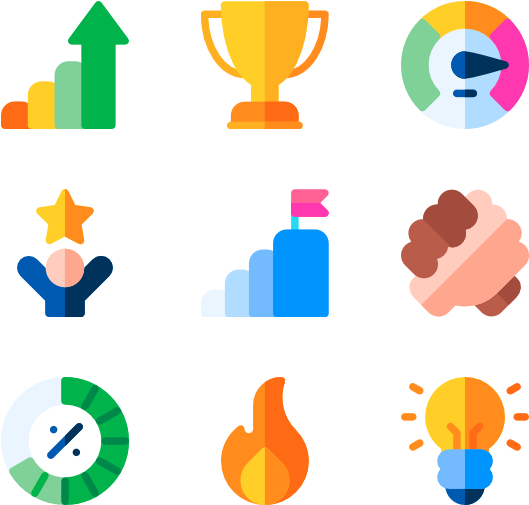Elevating Your Business Through Exceptional User Experience Design
In today's digital marketplace, a superior user experience is no longer a luxury—it's a necessity. Customer satisfaction and loyalty are paramount, making user experience design (UXD) a critical element for businesses aiming to thrive. This article delves into fifteen key strategies to leverage UXD for remarkable business growth, offering practical examples and expert advice to guide your approach.
1. Deeply Understanding Your Target Audience: Before designing any experience, thoroughly understand your ideal customer. Conduct comprehensive market research, analyze behavioral patterns, and pinpoint their pain points and preferences. This intimate knowledge forms the bedrock of a truly resonant user experience.
Example: A fitness app targeting millennials might integrate gamification and robust social sharing capabilities to foster engagement and motivation.
2. Optimizing Website Navigation for Effortless Exploration: Intuitive website navigation is crucial. Implement clear menu structures, intuitive breadcrumbs, and a powerful search function to ensure users effortlessly find what they need, reducing frustration and enhancing their journey.
Example: Amazon’s navigation, while seemingly simple, is a masterclass in effective design, empowering users to locate products quickly and efficiently, boosting conversion rates.
3. Prioritizing Mobile Optimization for Seamless Access: With the surge in mobile internet usage, responsive design is non-negotiable. Ensure your website and applications provide a consistent, high-quality experience across all devices and screen sizes.
Example: Instagram’s mobile app exemplifies perfect mobile optimization, offering a smooth and engaging experience for users on the go.
4. Streamlining Checkout Processes for Frictionless Transactions: Simplify the checkout process to minimize cart abandonment. Utilize progress indicators, autofill features, and multiple secure payment options to create a seamless and frustration-free purchasing experience.
Example: ASOS's streamlined checkout allows users to save payment details, minimizing steps and accelerating the purchasing process.
5. Building Effective Feedback Loops for Continuous Improvement: Actively solicit user feedback and incorporate it into your design process. Leverage surveys, rating systems, and reviews to identify areas needing improvement and refine the user experience iteratively.
Example: Airbnb's robust review system fosters transparency and trust, enabling both hosts and guests to share feedback, creating a more reliable platform.
6. Personalizing the User Journey for Enhanced Engagement: Tailor the user experience to individual preferences and behaviors using data analytics. Offer personalized recommendations, content, and promotions to maximize user engagement and satisfaction.
Example: Netflix masterfully personalizes recommendations based on viewing history, keeping users engaged and satisfied.
7. Harnessing the Power of Storytelling for Brand Connection: Engage users through compelling narratives that resonate with your target audience. Crafting a story that evokes emotion fosters a stronger connection with your brand.
Example: Dove's "Real Beauty" campaign showcases the power of storytelling in advertising, successfully repositioning the brand with a powerful message that resonates globally.
8. Optimizing Website Loading Speed for Instant Gratification: Slow loading times frustrate users and lead to high bounce rates. Optimize your website's loading speed by compressing images, minimizing scripts, and leveraging browser caching.
Example: Google's search engine is a prime example of lightning-fast loading speed, providing users with instantaneous results and a seamless experience.
9. Simplifying Form Completion for Increased Conversions: Lengthy forms discourage users. Streamline your forms by minimizing required fields and leveraging autofill functionality wherever possible.
Example: LinkedIn simplifies registration by allowing users to sign up using existing Google or Facebook accounts, reducing friction.
10. Prioritizing Visual Aesthetics for a Memorable Experience: Visual appeal significantly influences user experience. Maintain a consistent color scheme, typography, and imagery that aligns with your brand identity to create an aesthetically pleasing experience.
Example: Apple’s renowned minimalist design, characterized by clean lines and elegant aesthetics, creates a visually captivating user experience.
11. Investing in Usability Testing for Data-Driven Design: Conduct usability testing to identify pain points and areas for improvement. Gather feedback from real users and make iterative design adjustments based on their insights.
Example: Google continuously refines its search algorithm based on extensive usability testing, ensuring a superior user experience.
12. Leveraging Social Proof to Build Trust and Credibility: Integrate social proof into your UX design to build trust. Display testimonials, ratings, and user-generated content to showcase positive experiences.
Example: Booking.com effectively uses real-time booking statistics ("X number of people are viewing this property") to encourage immediate bookings.
13. Providing Exceptional Customer Support for Enhanced Satisfaction: Prompt and effective customer support is paramount. Offer multiple support channels, including live chat, email, and a comprehensive knowledge base.
Example: Zappos is widely recognized for its exceptional customer support, going the extra mile to create memorable experiences.
14. Staying Ahead of UX Trends for Continued Relevance: Continuously monitor and adapt to emerging UX trends to maintain a competitive edge. Stay informed about design principles, technological advancements, and evolving user expectations.
Example: The widespread adoption of dark mode across applications reflects a responsive adaptation to user preferences and technological advancements.
15. Measuring and Analyzing Performance for Data-Driven Optimization: Use analytics tools to track key performance indicators and user behavior. Analyze the data to identify areas for improvement and make informed, data-driven decisions to enhance UX.
Example: Google Analytics provides valuable insights into user behavior, allowing businesses to optimize their UX strategies effectively.
In conclusion, prioritizing user experience design is crucial for success in today's digital landscape. By implementing these fifteen strategies, businesses can cultivate exceptional user experiences, foster customer loyalty, and achieve significant business growth. What are your key insights regarding the impact of UXD on business success? What other crucial elements would you add to this list?
```



